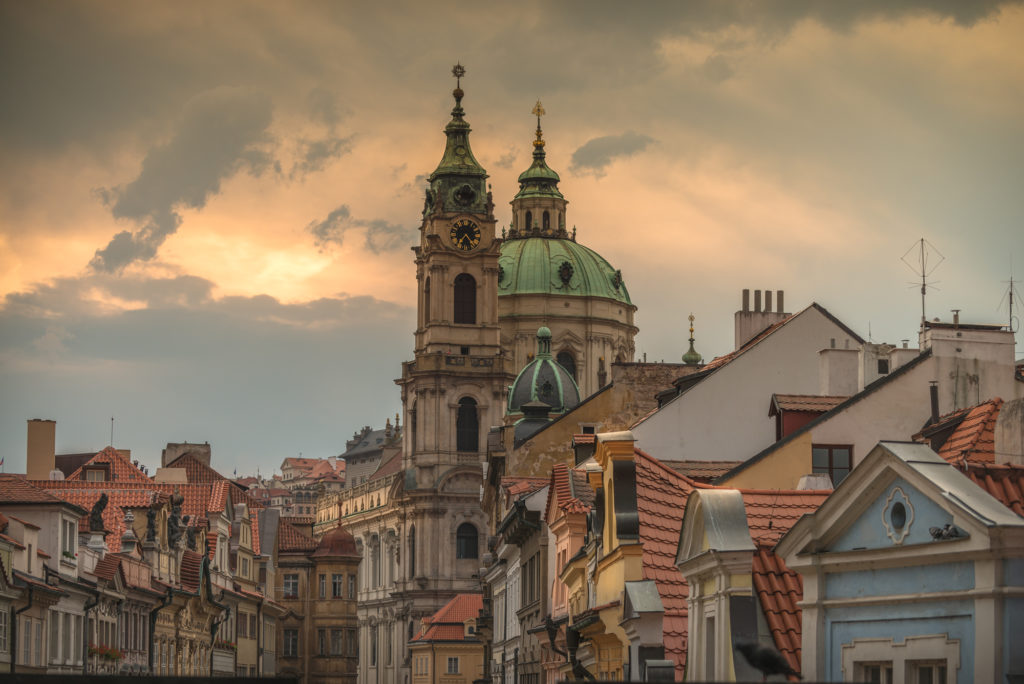
In Prague, as elsewhere, it’s always good to get a bit of height! It gives you a chance to breathe a little and see the city in a different light. And in the Czech capital, there’s no shortage of opportunities to climb to the top of a tower or bell tower!
Isn’t the Czech capital known as the city of a hundred towers or steeples?
It’s easy to climb a tower in Prague. It’s said that there are almost a thousand of them (not counting the corner turrets of bourgeois buildings). A few enthusiasts have identified 120 major towers in the city center alone. The most beautiful can be visited. Municipal buildings, cathedrals, churches, gates, the mini Eiffel Tower (tickets here), the television tower (tickets here) or the Dancing House await you for a nice little break. Not to mention the many restaurants and cafés with terraces or roof tops (with a special mention for the rooftops of the Lucerna passage, accessed by the unusual paternoster elevator).
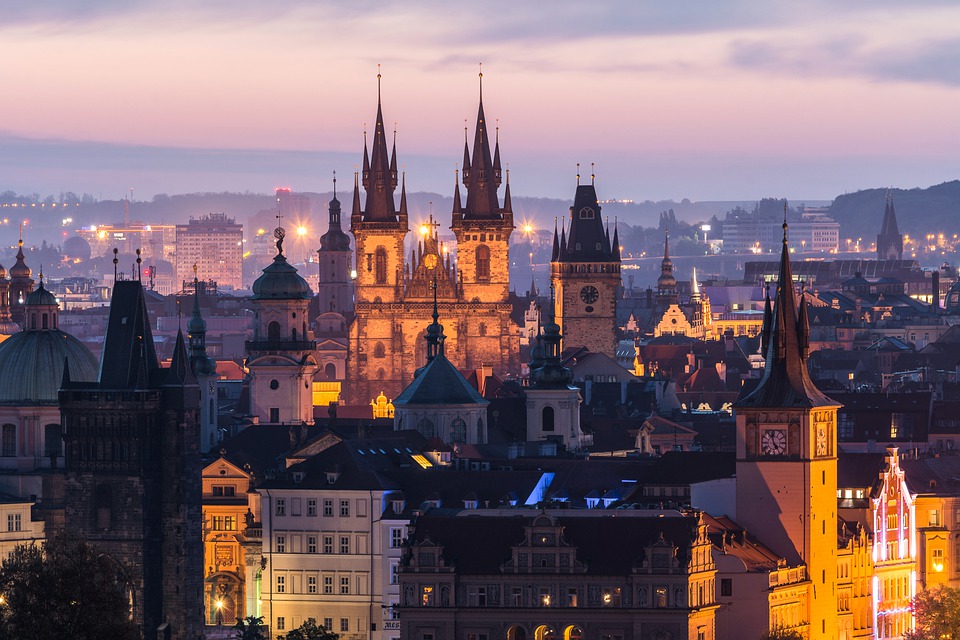
While I often advise visitors to Prague to climb a hill to take in the sights of the city (Letná, Riegrovy sady, Parukářka, Petřín or Vítkov), it’s just as smart to climb to the top of a tower. You’ll have a panoramic view of Prague’s characteristic red roofs, whether in the Old Town or in the Malá Strana district at the foot of the Castle.
In this article, I’ll show you all the towers in Prague that are worth a visit. You can add one or two to your itinerary, especially as the tour is so quick!
The bell tower of St. Nicholas Church in Malá Strana

The district of Malá Strana is authentic and beautiful, and you can safely set down your suitcases here! This is where you’ll find the bell tower of the Baroque Church of St. Nicholas (1752, although work began in 1703 under the direction of Christophe Dientzenhofer, who was succeeded by his son Kilian Ignace). The church is easily recognized by its green dome (a dome with a circumference of 20 m to a height of 65 m). From up there, a splendid view over the red roofs of Malá Strana. A view that has to be earned, with 215 wooden steps to climb. The belfry (the last to be built in Prague) served as a fire alarm before, under Communism, the StB secret police set up an observation post to spy on the neighboring American, German and even French embassies. The decor is original, with beer labels stuck to the wall. Beer is a diuretic, and a urinal was installed with drainage through the gutter and gargoyles! It’s the only hideout (out of a hundred or so) to remain untouched after the Velvet Revolution of 1989. The atypical place can be visited (tickets here).
Visitors can also discover the tower janitor’s apartment and its „black kitchen“ (a soot-blackened room used for heating and cooking)
To keep an eye on the frequent fires, someone had to live up there all year round. Even during the harsh winter months! St. Nicholas Church, a listed monument, is Prague’s most famous Baroque church and one of the most important Baroque buildings north of the Alps. No less than 3,000 m2 of murals also await you inside!
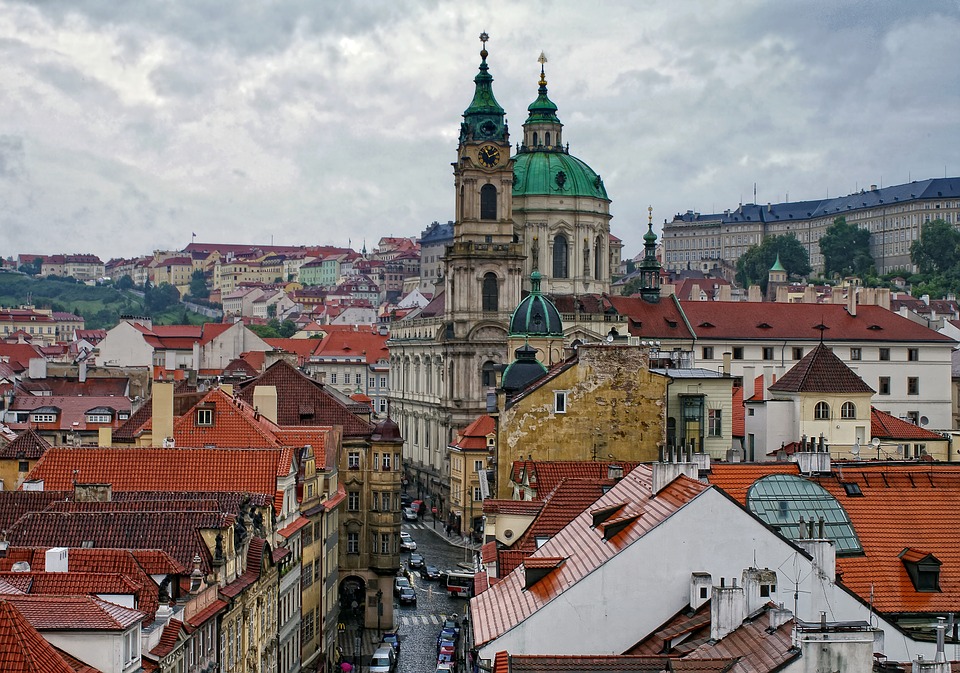
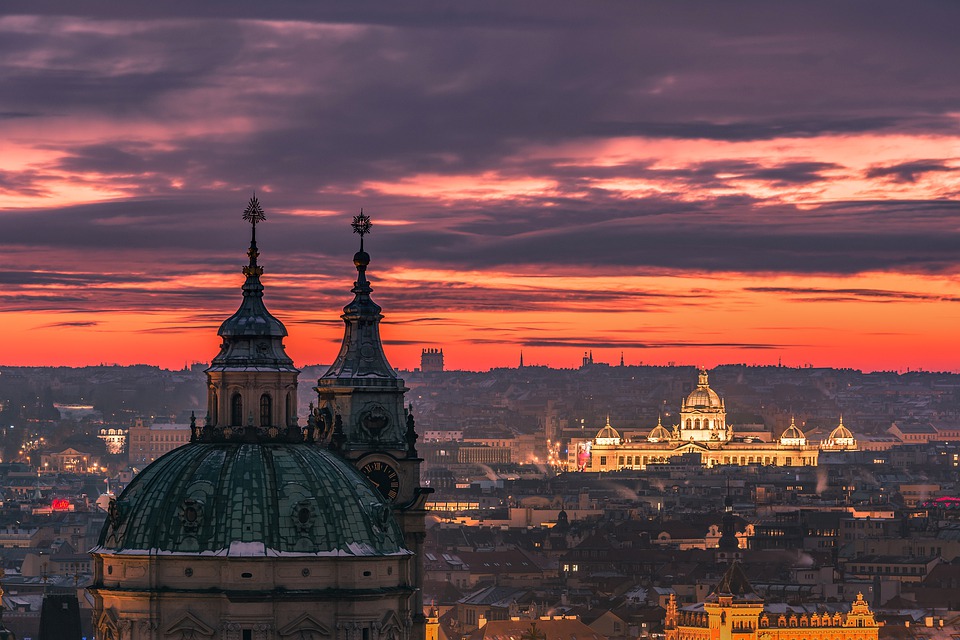
Bell tower of St. Nicholas Church in Malá Strana (Svatomikulášská městská zvonice)
Malostranské náměstí 29
Open daily (timetables here, tickets here).
Charles Bridge tours
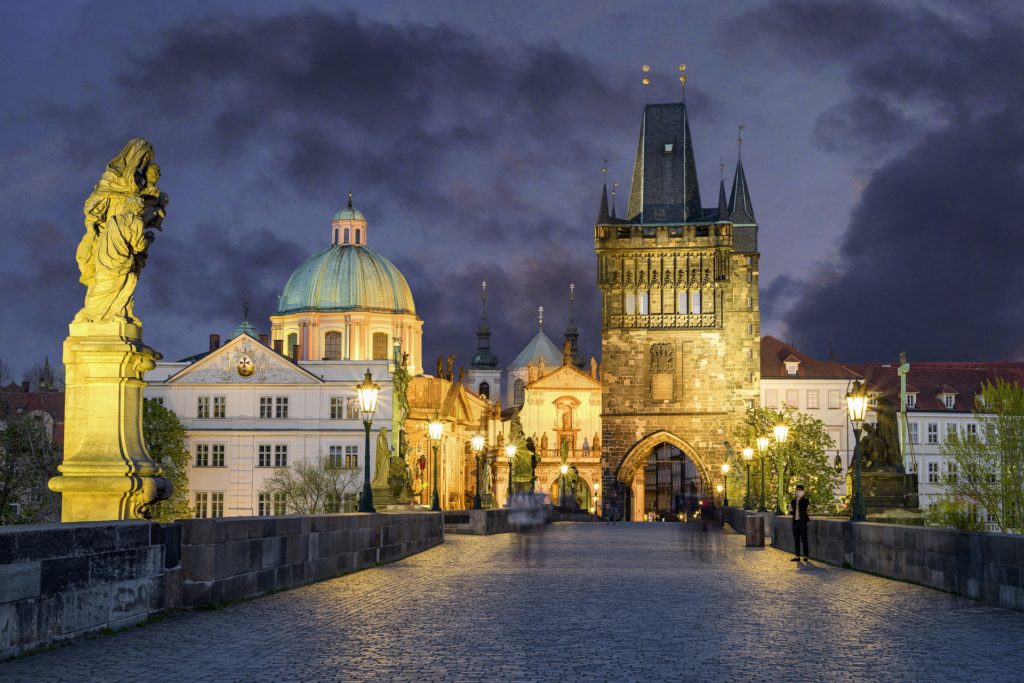
You’ll pass over the Charles Bridge at least once or twice during your stay in Prague. Visit one of the towers! It’s also a good way to escape the crowds, as these towers are not very busy (wrongly so!), unlike the bridge.
On the east side, i.e. the Old Town side (Křižovnické náměstí), the tower is superb. It dates back to the mid-14th century (construction began in 1357). Built at the same time as the bridge, it was later completed by architect Peter Parler (who also designed most of the statues on the bridge and St. Vitus Cathedral) during the reign of Wenceslas IV, son of Charles IV. Some one hundred stonemasons worked on the project for 25 years. 47 m high (3 storeys), the tower was part of the fortifications and forms a gateway to the Old Town. Considered one of the most beautiful Gothic gates in the world, the tower is steeped in history: a sort of symbolic triumphal arch, it witnessed the coronation procession of the Bohemian kings to the Castle.
It was also here, in 1621, that 12 decapitated heads of Czech nobles were displayed following their participation in the rebellion against the Habsburg dynasty. They remained there for over 10 years before mysteriously disappearing one night.
You can learn more about the tragic story of these beheaded Protestant nobles in Old Town Square, where white crosses on the ground symbolize this bloody episode. The tower was damaged at the end of the Thirty Years’ War in 1648 during the siege of Prague by the Swedes, who were finally repulsed. The tower made history a second time during the uprising of 1848, when insurgents repelled Austrian troops attempting to cross the bridge. The west face, with its Gothic ornamentation, has been severely damaged by Swedish cannon fire.
- Nevertheless, on the right, a lion wrestles with a snake, and on the left, an eagle and a griffin.
- The Gothic statue of the bridge’s patron saint (St. Vitus on a kind of bridge) can be found on the east facade of the Old Town, at first-floor level (under the pointed arch), as well as seated statues of the sovereigns Charles IV and Wenceslas IV on either side. The 24 crabs above them symbolize the hours of the day.
- On the right, a lion devours meat; on the left, an eagle eats a rabbit.
- Look up and, above the door, you’ll see the coats of arms of the countries ruled by Charles IV.
- At the corners of the tower, 2 m away, you’ll also find some rather astonishing sculptures: on the left, a woman accompanied by a man whose hand is tucked under her skirt (malicious tongues say it’s a monk and a nun), and on the right, a man caressing a woman’s breast.
- But above all, enter and take the 138-step spiral staircase to the top: another saucy statue awaits you, that of the tower’s guardian, as well as a superb stained-glass window depicting a kingfisher (sculptures of kingfisher, associated with King Wenceslas IV, also appear on the facade). The view from the roof gallery, at 26 m, is superb over the Hradčany Castle district and the gallery of statues on the bridge! The building is also exceptional for the arrangement of the roof beams, dating from 1387.
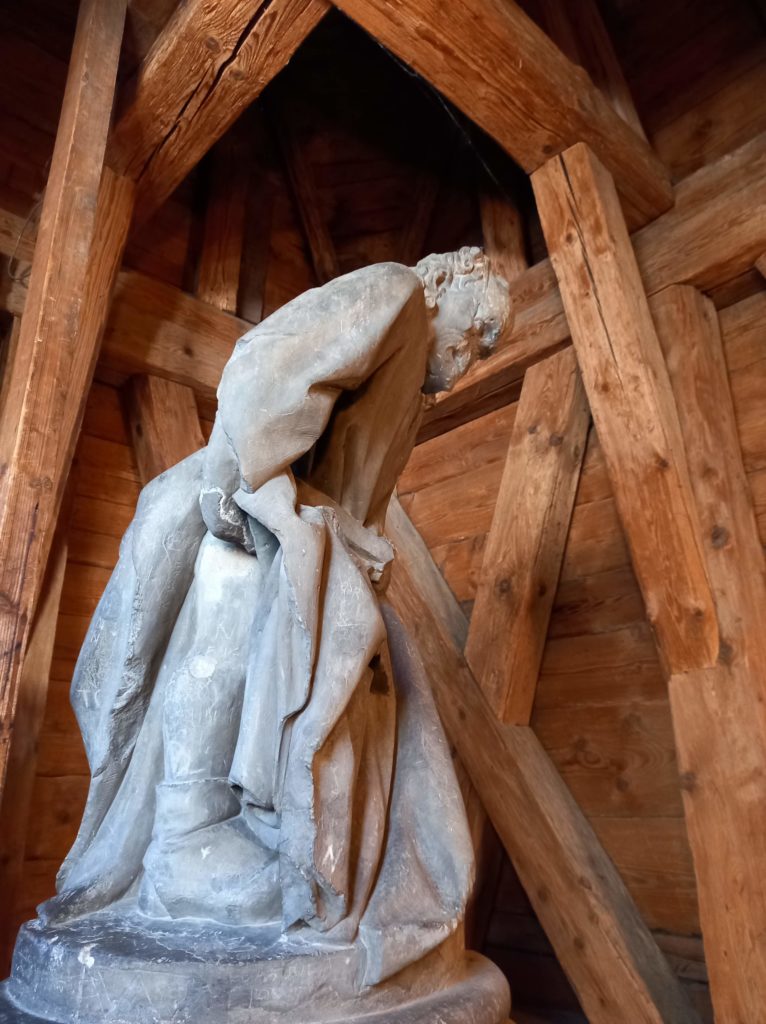
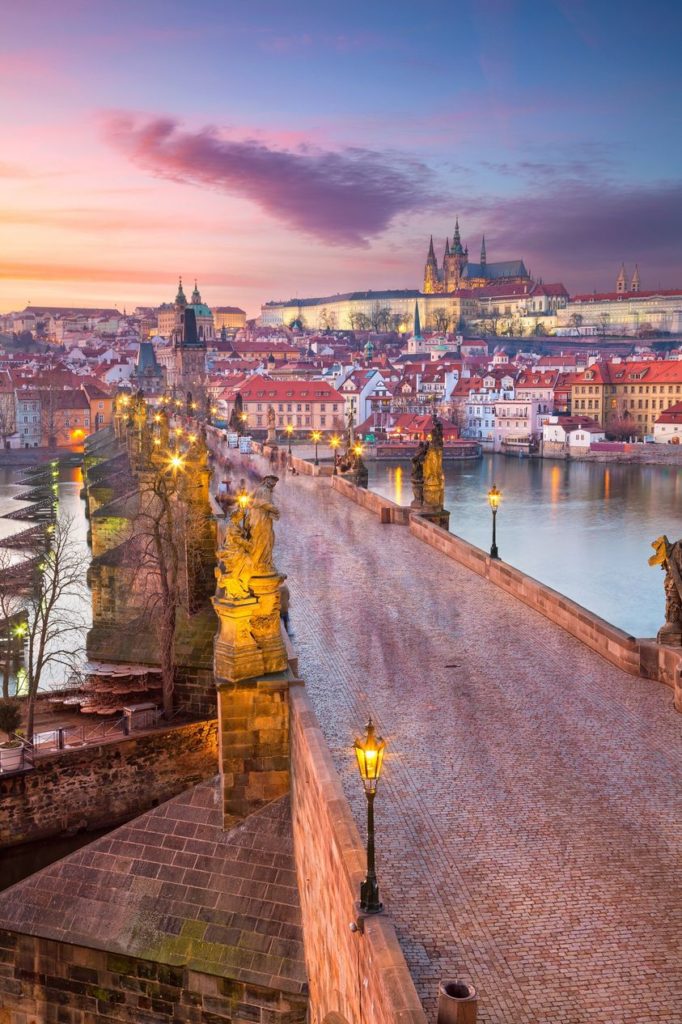
During the summer solstice, around June 21, if you look up from the tower towards Prague Castle, you’ll see the sun setting over St. Vitus Cathedral. The „Prague Solstice Mystery“ was conceived by astrologers contemporary with Charles IV (the king was an esotericist) at the time of the building’s construction.
On the Malá Strana side, the tower was built in 1464, replacing a Romanesque tower. This tower is more unadorned, as it has no statues. The parapet walk, 26 m above ground level, is open to the public. The tower is very reminiscent of the architecture of the tower on the Old Town side, and neighbors the smaller Judith Tower of Romanesque origin (late 12th century, therefore older than the Charles Bridge itself, and probably even older than the Judith Bridge, which collapsed in 1342 and was replaced by the Charles Bridge). The Judith Tower housed a prison in the early 15th century, before serving as a toll booth from the late 16th century to 1784. Today, it houses a small tourist office in summer.
Charles Bridge Tower on the Old Town side (Staroměstská mostecká věž)
Open daily (timetables here).
Old Town Town Hall Tower
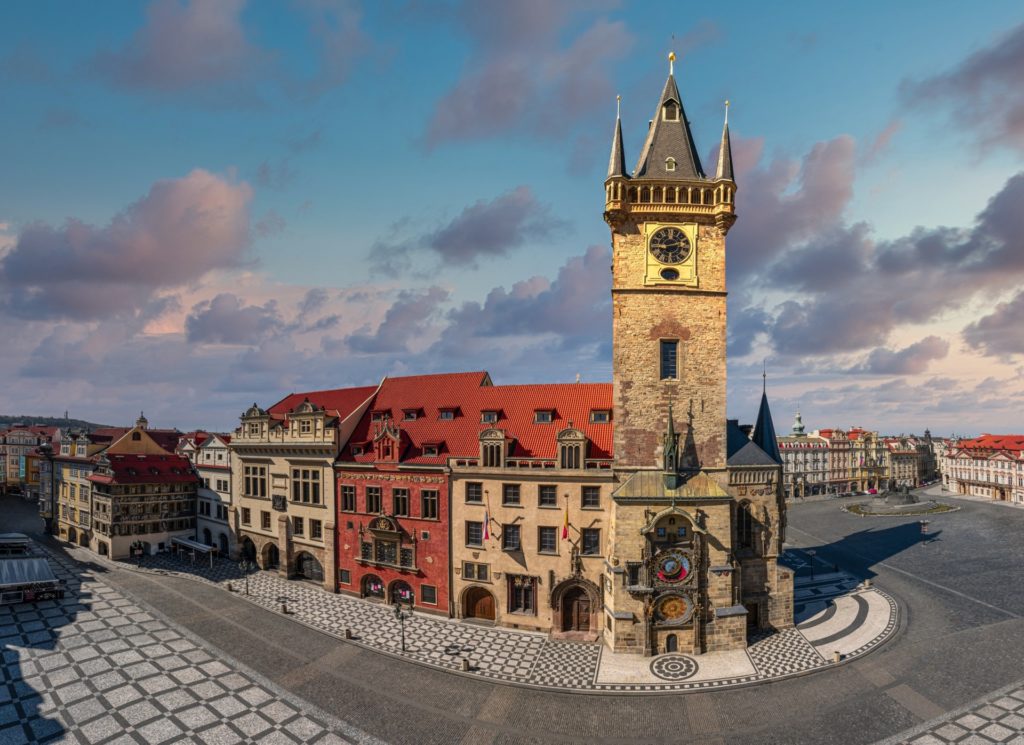
The Old Town Town Hall once housed the city council (from 1338). It is a Gothic house (admire its richly decorated portal!) resting in part on Romanesque foundations. A handsome and imposing 14th-century belfry dominates the ensemble. At 42 meters, it was the tallest building in Prague at the time, and once again housed the watchman at the top. The panoramic gallery, accessible by stairs and a superb, photogenic elevator, offers one of the finest views of the city today. Admire Prague’s oldest square, with its Jan Hus statue, the Church of Our Lady of the Týn, the Baroque Church of St. Nicholas (yes, there are two St. Nicholas churches in Prague, one on each side of the river) and the Rococo Goltz-Kinský Palace next to the Gothic House with the Stone Bell. Since 1410, the tower’s south façade has also housed the famous astronomical clock. On the second floor, you’ll find a pretty chapel from which you can see the site of the 12 wooden apostles that scroll above the clock at precisely the right hour. The movement of the apostles also animates the figures to the side: the Skeleton, the Turk, the Miser, the Vain Man and the Rooster. At the very end of the Second World War, on May 5 and 6, 1945, the tower was severely damaged by bombing raids and its wing burned down (the old elevator is on display at the cool Museum of Technology).

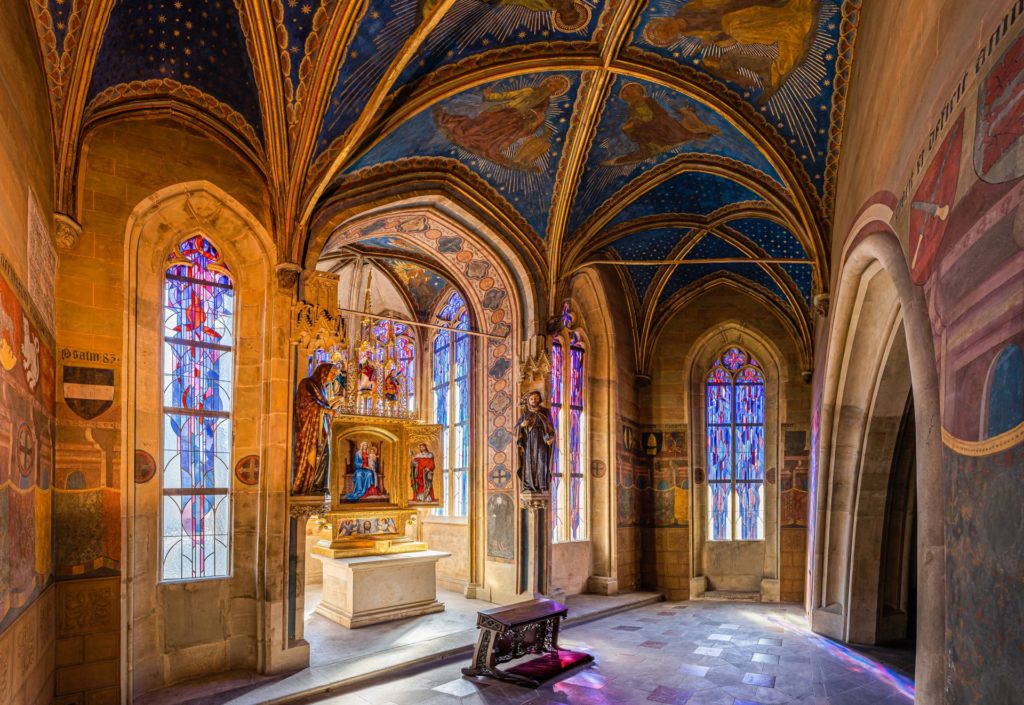
Old Town Hall (Staroměstská radnice)
Staroměstské náměstí 1
Open daily (opening hours here, tickets here). The tower is part of the guided tour of the Old Town Hall. Entrance tickets also give access to the chapel, ceremonial rooms and Romanesque-Gothic underground passages. This is the only medieval tower in Prague to be fully accessible to the disabled (splendid glass elevator!)
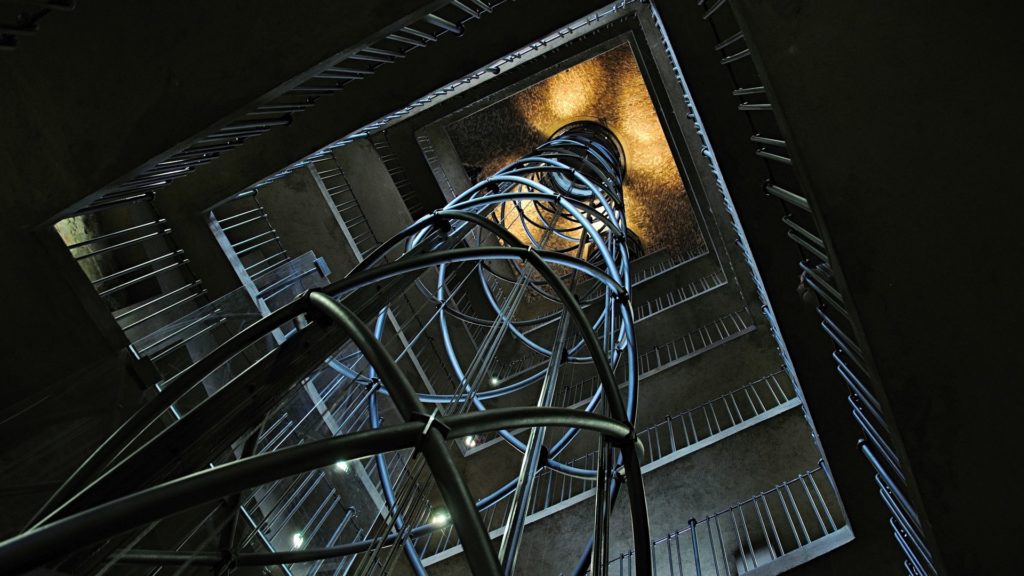
The Powder Tower
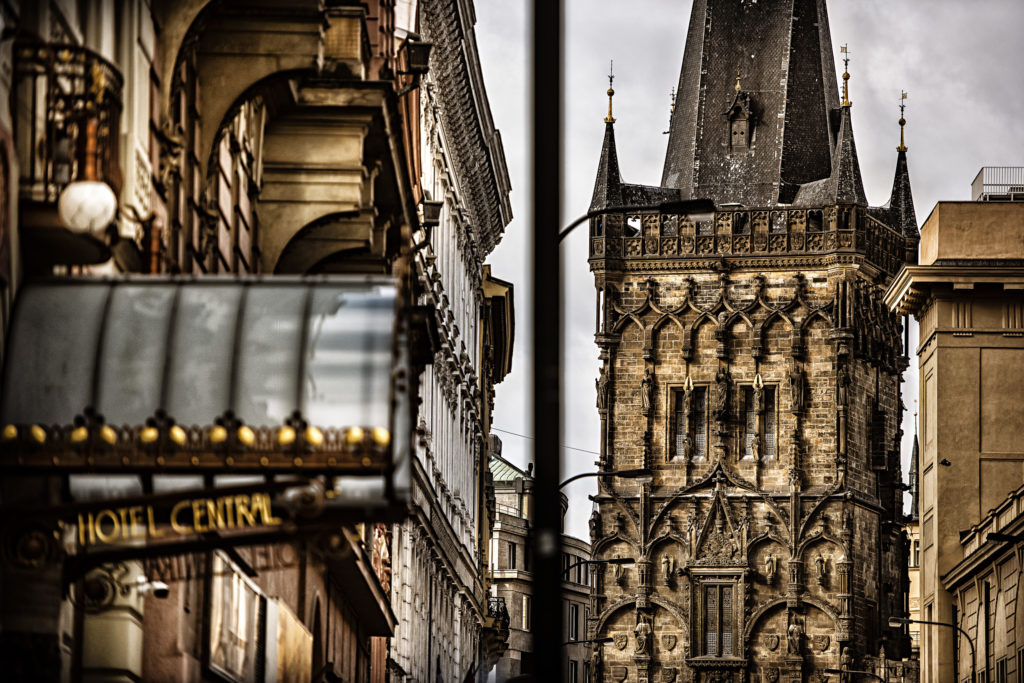
The Powder Tower (1475), with its slate roof and four corner turrets, was part of the fortifications. It was a monumental gateway to the Old Town, and a right of passage was levied. In 1488, its construction was interrupted when the royal residence moved from the Old Town to the Château. It was from this Powder Tower that the coronation processions of the Bohemian kings (Voie Royale) would later set off, always in the direction of the Castle. Rebuilt at the end of the 19th century in neo-Gothic, pseudo-Gothic or late Gothic style (it’s all the same!), it is one of Prague’s major Gothic monuments (superb rib vaults). The facades feature statues of kings, including the famous Charles IV (the other statues represent the patrons and saints of the Bohemian lands, as well as Christ, the Virgin Mary and her child, Adam and Eve, Saint Peter and Saint Paul). On each of the corner columns, you’ll also see a lion with the insignia of Prague’s Old Town. The tower rises to a height of 65 m, and the walkway (44 m) can be reached after climbing a spiral staircase with 186 stone steps.
- Why „powder“? Simply because, in the early 18th century, gunpowder began to be stored here.
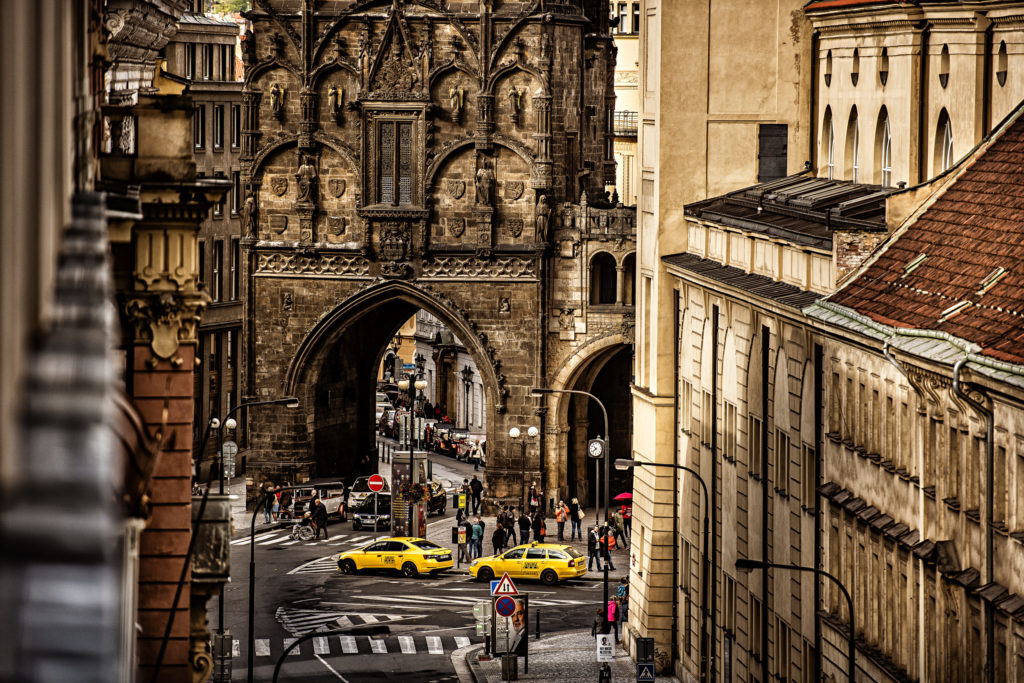
Powder magazine tower (Prašná brána)
Na Příkopě / náměstí Republiky 5
Open daily (timetables here, tickets here).
Henri Tower (or Jindřišská Tower)
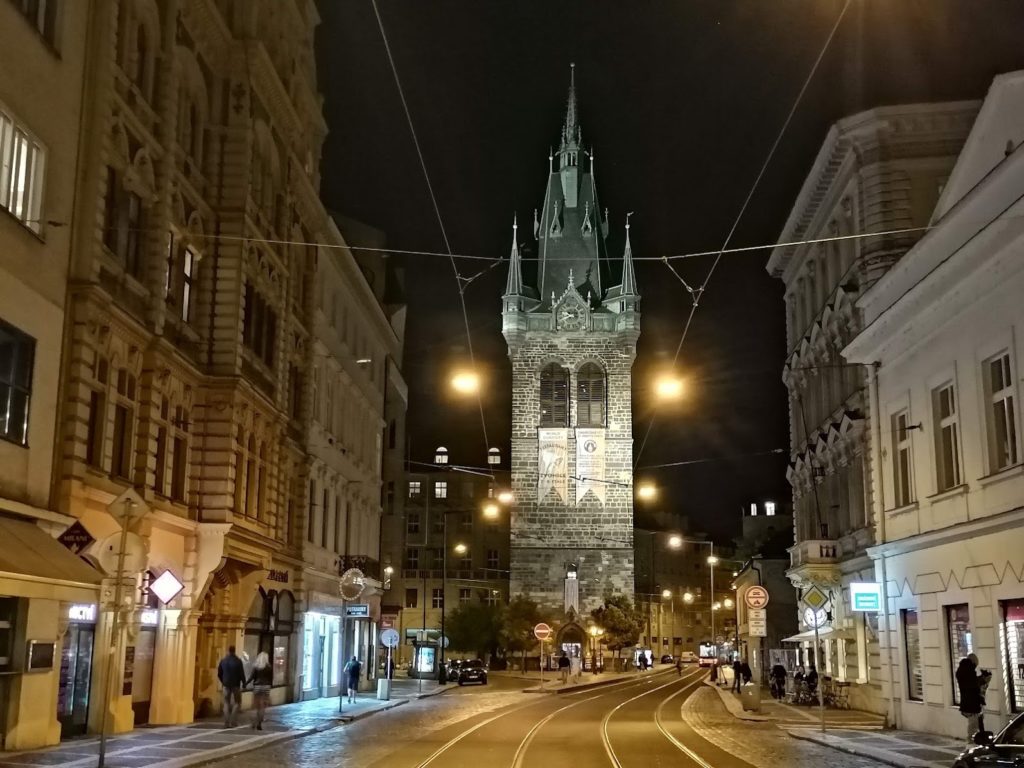
Late Gothic in style, this tower stands next to the Church of St. Henri and St. Cunegonde (svatý Jindřich and svatá Kunhuta). It was built between 1472 and 1476 on the site of the former churchyard. The view from the stone bell tower (65 m, late 16th century) is superb! In the mid-17th century, it served as a guardhouse and was damaged by Swedish artillery fire in 1648. It also suffered during the Prussian siege of 1757, and its magnificent Gothic roof was broken in a storm in 1801. It was rebuilt in the neo-Gothic style at the end of the 19th century (Josef Mocker), with a new slate roof. Its framework (1879) is superb! Today’s ten-storey tower is rectangular and its bells bear the names Jindřich (3350 kg, 1680), Dominik (1000 kg, 1850) and Maria (500 kg, 1518). The interior dates from 2001. The tower houses the excellent Zvonice („The Bell“) restaurant, with its superb, unusual setting under the original beams. Here you can discover the original preserved bell of St. Maria. It’s a real experience to dine here, and one I recommend!

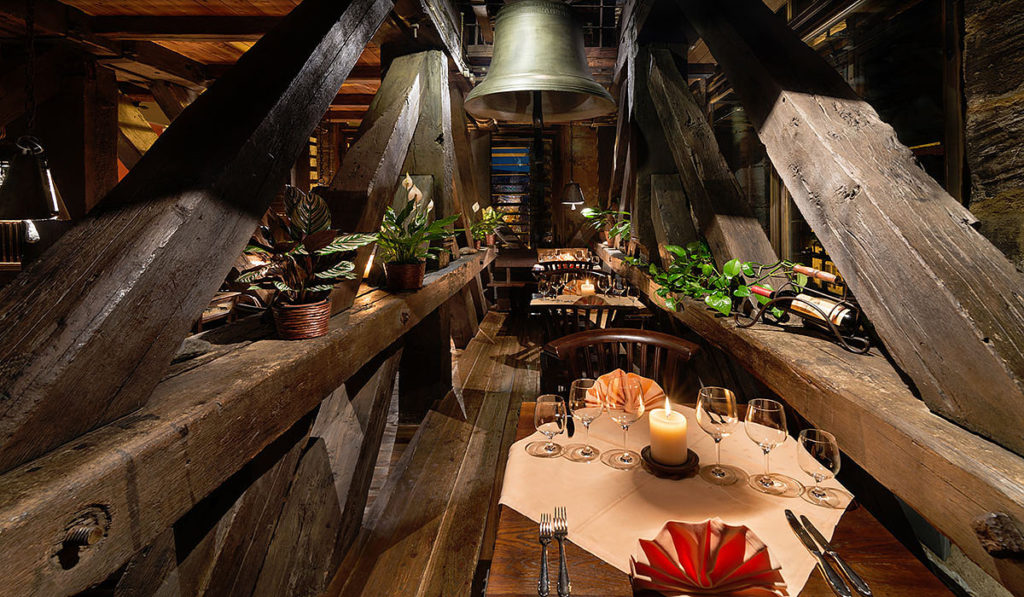
Jindřišská
Open daily (10 a.m.-7 p.m.)
Clementinum Astronomical Tower
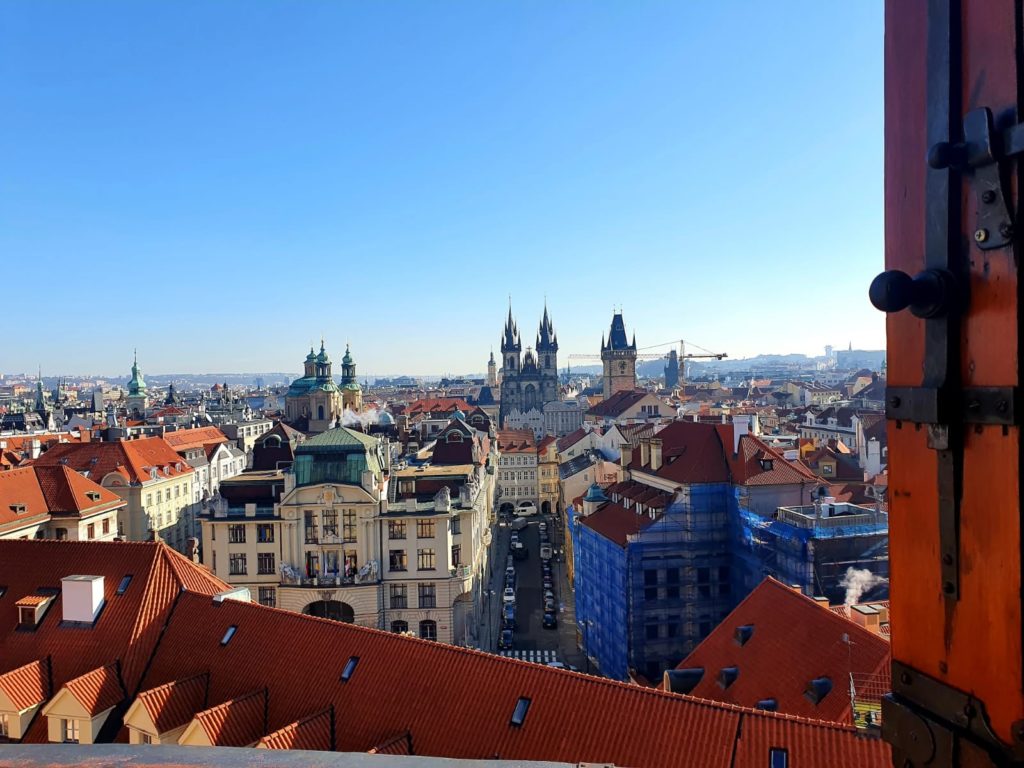
The Clementinum is a vast complex classified as a national cultural monument. It was built by the Jesuits between the mid-16th and mid-18th centuries (the college, founded in 1556, competed with Charles University until 1773).
- Why Clementinum? Because the Jesuits, who had come to fight the Reformation (the Protestant Czech nobility was finally defeated in 1620), first occupied the Gothic church of St. Clement (which became the church of St. Salvator in 1578).
Today, the Clementinum is home to the National Library: 6 million books, including the famous, richly illuminated Vyšehrad Codex (only a facsimile can be seen today).
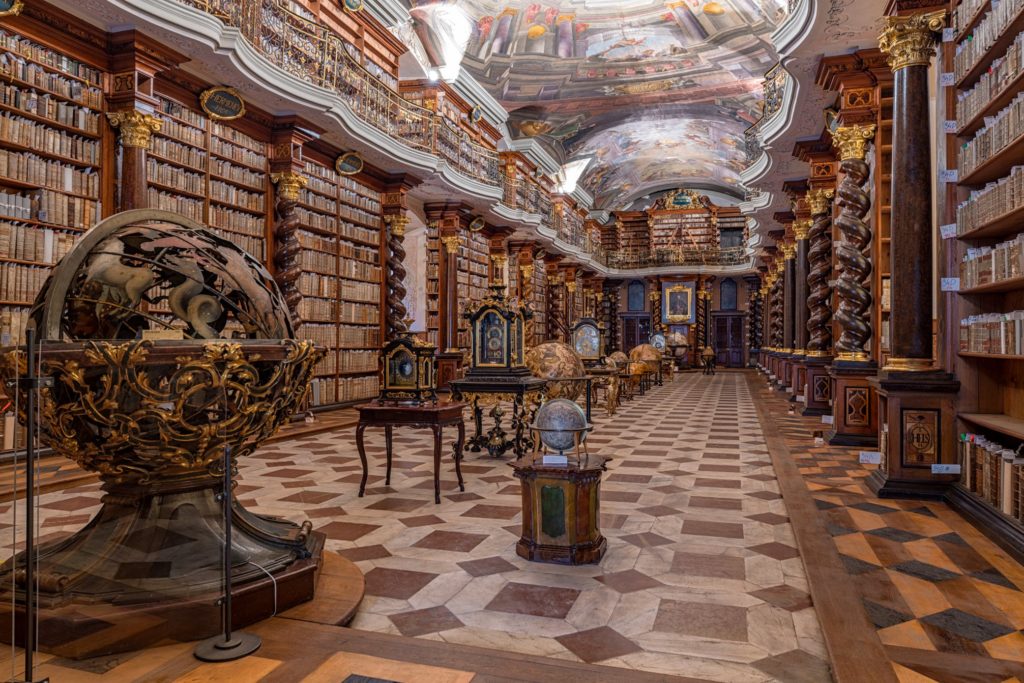
Within the complex you’ll find
- the Church of St. Saviour, the Italian Chapel of the Assumption of the Virgin Mary and the Baroque Church of St. Clement (1715, one of the most beautiful Baroque interiors in Prague)
- the Chapel of Mirrors, with its many stuccoes and regular concerts (tickets here)
- the superb Baroque library (closed for 70 years until 2000, it can be visited but not walked in) with frescoes and gallery (1722, Kilián Ignác Dientzenhofer), housing 22,000 books (including astronomers’ manuscripts) and unique globes.
- but also a 52 m-high astronomical tower (take a good look at the tower’s dome, dominated by the giant lead statue of Atlas supporting the celestial vault), reached by a steep 172-step spiral staircase (there’s an elevator to the 3rd floor to save you half the staircase). Until the late 1920s, a flag at the top indicated noon to the people of Prague. From up there, you’ll have a superb view of the city. Astronomical and climatic measurements have been taken here since the 1750s (systematic recording of weather and climate measurements from 1775 to the present day, a world record).
- You’ll also see some fifteen sundials on the facades of the Clementinum.

Mariánské náměstí 5 (entrances also at Karlova 1 and Křižovnická Street)
Open daily (opening hours here). Guided tours in English every 30 min, lasting 50 min (tickets here). A visit to the Clementinum includes the astronomical tower, the Meridian Room with its astronomical apparatus (2nd floor of the tower), the Baroque library and occasionally the magnificent Mirror Chapel, which, as mentioned above, regularly hosts classical music concerts.
The Petřín belvedere

This 58 m-high „mini Eiffel Tower“ can be seen from quite a distance (it’s even lit up at night), and it really is part of the panorama. Located on the hill of Petřín, it rises to an altitude of 320 metres (just like its Parisian counterpart). From its summit, accessible by elevator or staircase (299 steps), you can enjoy a superb view of the whole city from a cabin located 51 m above sea level. The Tower’s construction (1891, to coincide with the Prague General Exhibition) was inspired by the Parisian Eiffel Tower (1/5 scale), built less than two years earlier. Indeed, members of the Czech Tourist Club had returned enthusiastically from the 1889 Paris World’s Fair, where they had seen the original. In 1939, Hitler insisted on destroying the tower as an expression of Czech Francophilia! The tower itself is interesting (an octagonal metal structure weighing 175 tons). A Petřín hill that can be climbed by the famous and popular funicular railway located further down in the Újezd district.
Petřín lookout (Petřínská rozhledna)
Petřínské sady 633
Open daily: opening hours here and ticket here. The latter ticket also gives access to the nearby Ice Palace-Mirror Maze, which children will love.
Žižkov television tower
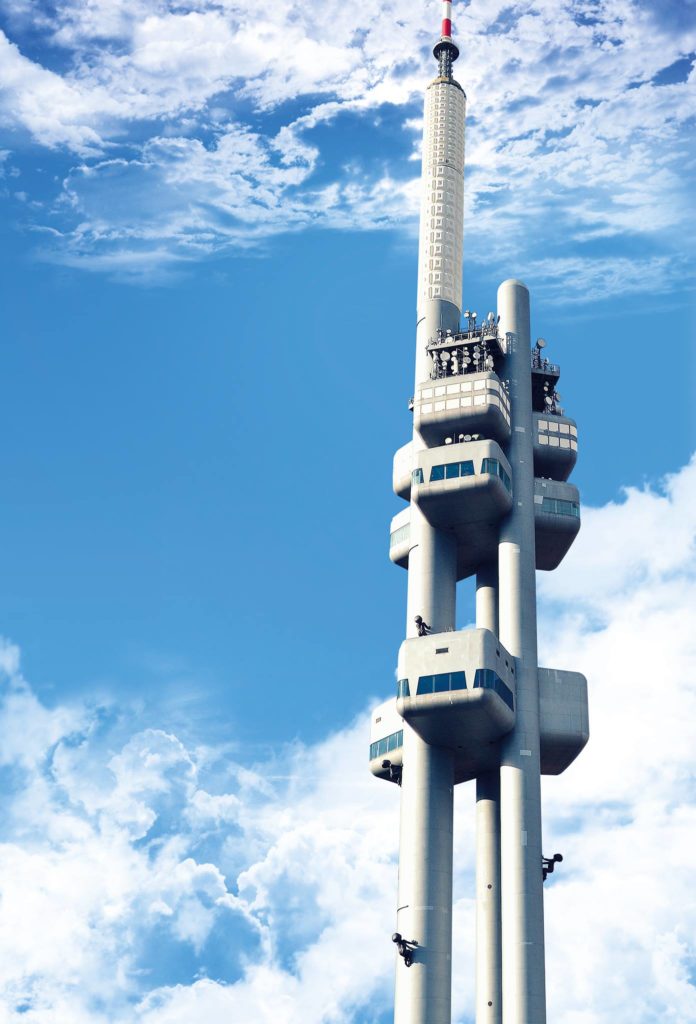
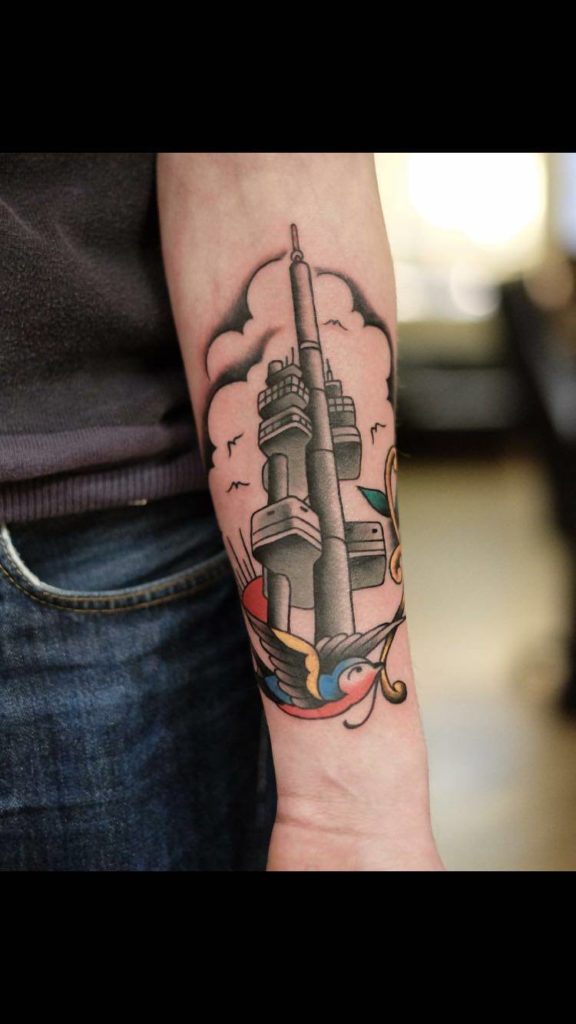
At 216 m in height (the highest monument in the Czech capital), the Žižkov television tower is an obvious landmark in Prague. Sometimes nicknamed „the rocket“ by Prague locals, it was built between 1985 and 1992 and is one of Prague’s three symbols, along with the Castle and Charles Bridge (for a tour, see here). The tower consists of three circular tubes 134 m high, with two high-speed elevators in the main tube. It is also topped by a TV transmitter antenna. The construction of the tower has given rise to much controversy, not least over the threat of an alleged electromagnetic field, which a commission of experts has refuted. The TV tower dominates Prague 3′ s lively Žižkov district, where you can enjoy a pleasant stroll. The 93 m panoramic room offers a splendid 360° view of Prague. The tower also features a restaurant at 66 m and an atypical One Room Hotel, with a café and miniature golf course at its foot. On the sides of the tower this time, 10 astonishing statues of giant babies („Babies“) have been racing to the top since 2000. These statues are the work of the controversial Prague artist David Černý.
Žižkov television tower – Tower Park Praha (Žižkovská televizní věž)
Mahlerovy sady 1
Open daily 9am-0am (tickets here).
The Dancing House

This is the finest example of modern architecture in Prague. It was also the first ambitious and controversial architectural project after the Velvet Revolution. The Dancing House (1996, Vlado Milunić and Frank O. Gehry) was inspired by the famous dancing couple, Fred Astaire (the stone tower with a sort of hat at the top) and Ginger Rogers (the glass tower with a flared dress at the bottom). Also known as „Ginger & Fred“, the building was constructed on a greenfield site where once stood a house destroyed by the bombs of the American air raid of February 14, 1945 (the Americans thought they were bombing Dresden!) In the Dancing House, you will find a gallery, a café, a restaurant with panoramic terrace (the aptly named Ginger & Fred) and a hotel. Its interiors were partly designed by Czech-born British architect Eva Jiřičná. Don’t hesitate to climb up, especially as the tower is within walking distance of the historic center. It’s particularly pretty at night!
Rašínovo nábřeží 80 / Jiráskovo náměstí 6
And, as mentioned in the introduction, don’t forget all the pretty terraces and rooftops offering a bird’s-eye view of Prague. You can also climb the hills of Letná, Parukářka or Vítkov (home to two amazing monuments).